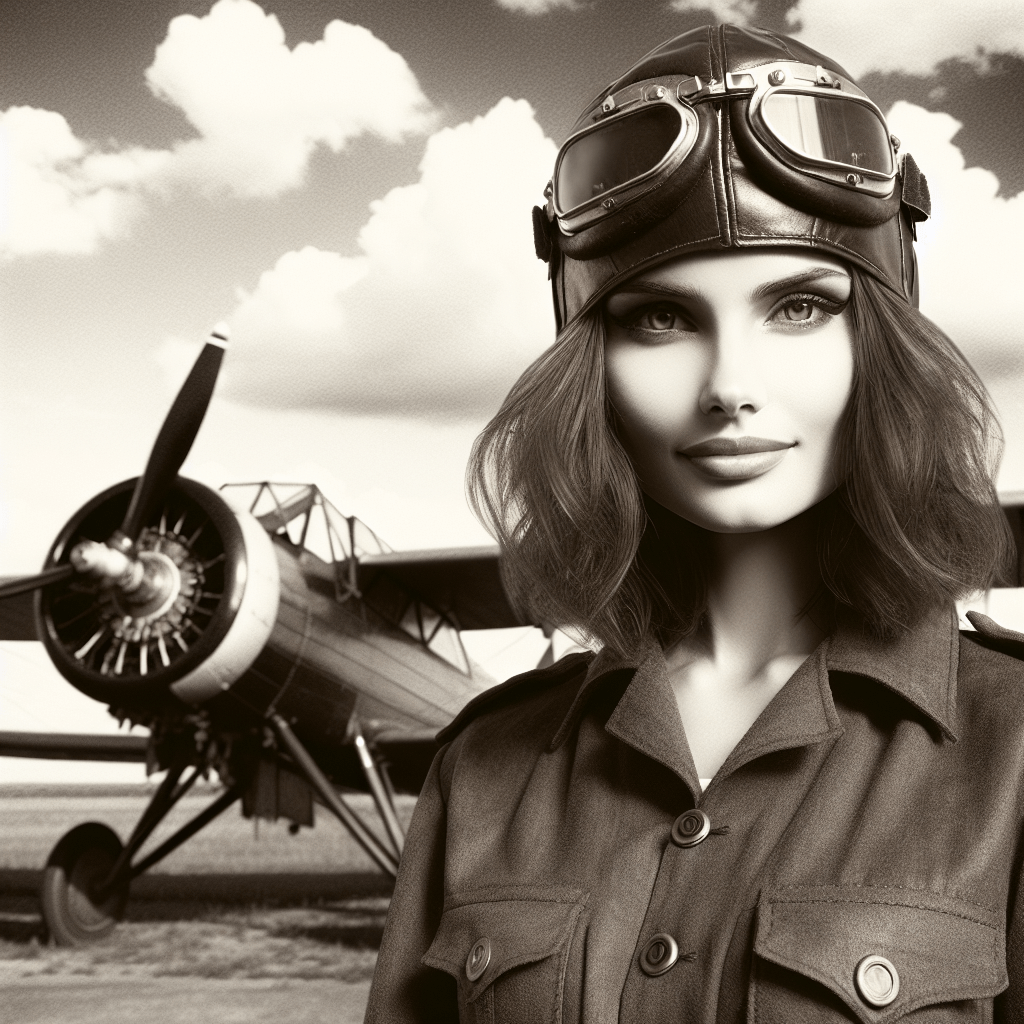The Mysterious Legend of Amelia Earhart: A Pioneering Aviator and Enduring Mystery
Amelia Earhart’s legacy, cloaked in mystery and speculation, reaches far beyond her ground-breaking accomplishments as a female pilot during a time of predominantly male dominance in the field of aviation. Her story intertwines profound inspirational triumphs with one of the most enigmatic disappearevents in modern history. This article seeks to navigate through Earhart’s life journey, her monumental achievements, her contributions to the field of aviation, and the profound impact her disappearance had on the world.
Early Life and Introduction to Aviation
Amelia Mary Earhart was born on July 24, 1897, in Atchison, Kansas. Her childhood was marked by a spirit of adventure and independence, a characteristic trait that would define her entire life. Growing up in a family where unconventional behaviors for women were encouraged, Earhart showed early on the ambition and courage that would eventually make her a household name.
Her first encounter with aircraft came during her youth, but initially, she did not express particular interest in flying. It wasn’t until December 28, 1920, when she took a 10-minute plane ride at an airshow in Long Beach, California, that Earhart’s passion for aviation was truly ignited. This experience catalyzed her determination to become a pilot. Within six months, she had saved enough money for flying lessons, which she began under the tutelage of another pioneering woman aviator, Anita “Neta” Snook.
Rise to Prominence in Aviation
Earhart’s dedication rapidly paid off as she attained her pilot’s license from the Fédération Aéronautique Internationale on May 15, 1923. She began setting records soon thereafter; notably in 1922 when she became the first woman to fly solo above 14,000 feet. However, it was in 1928 that Earhart’s international fame began to climb when she was invited as a passenger on a transatlantic flight dubbed Friendship. Although not at the controls, she became known as the first woman to cross the Atlantic by air, thrusting her into the public eye and gaining substantial media attention.
Not content with merely being a passenger, Earhart continued to push boundaries. In 1932, in a Lockheed Vega 5B, she became the first woman—and only the second person after Charles Lindbergh—to fly solo across the Atlantic Ocean. This significant accomplishment solidified her reputation as one of the leading figures in aviation. Over the next five years, Earhart continued to break records and carved her way into aviation history by setting altitude records and becoming the first person to fly solo from Hawaii to North America.
Advocacy for Women in Aviation
Beyond her practical achievements in the sky, Earhart was devoted to advocating for women’s participation in aviation—a field overwhelmingly dominated by men during this era. She was instrumental in forming The Ninety-Nines, an organization composed of licensed female pilots from around the world which still exists today, aiming to support and promote women in all aspects of aviation.
It wasn’t only in aviation that she advocated for women’s rights; Earhart was generally ahead of her time concerning gender equality issues. She was an ardent believer in women pursuing careers and defying conventional societal roles designed for them. Her marriage to George P. Putnam reflected this progressive approach as it was based on equal partnership—something that was quite rare at that time.
The Final Flight and Enduring Mystery
Perhaps what makes Amelia Earhart such an iconic figure is not just what she accomplished in life but also how her life seemingly vanished into thin air; an enduring mystery that has captivated public interest for decades.
On June 1, 1937, along with navigator Fred Noonan, Earhart embarked on an attempt to circumnavigate the globe along the equator—a feat no one had ever accomplished before. After numerous stops across South America, Africa, the Indian Subcontinent, and Southeast Asia, Earhart and Noonan arrived at Lae, New Guinea on June 29th. Approximately 22,000 miles of their flight had been completed; there were 7,000 more to go across the Pacific.
Their next stop was intended to be Howland Island—a tiny landmass between Hawaii and Australia—on July 2nd. Despite several radio transmissions indicating they were near their target destination and actively looking for Howland Island after encountering overcast skies and sketchy navigation situations due to technical difficulties with radio communication and navigation equipment malfunctions—their plane vanished while approaching Howland Island.
Extensive searches followed but turned up nothing concrete; no wreckage or concrete evidence of their fate was ever found—a fact that has spurred countless conspiracy theories and speculative explanations ranging from capture by enemy forces (during a period not long before World War II) to specters of daring secret missions or simply an unfortunate crash landing at sea leading to their demise.
The Legacy of Amelia Earhart
Even though Amelia Earhart’s more than eight decades-old disappearance remains shrouded in mystery, her legacy lives on today as profoundly more clear-cut: she remains a symbol of tireless ambition and fearlessness both in aviation and among women striving for equality.
Her achievements advocated not only breakthroughs in flight but also conveyed a message insistent upon redefining what was possible for women—and indeed for men—in an era when human potential began reaching skyward more than ever before. The world’s continued fascination with Earhart’s story serves as a testament to her enduring influence on adventurers and pioneers across generations.
Notes
*Image description*: A black-and-white photograph captures Amelia Earhart standing confidently beside her Lockheed Vega airplane with leather flight cap and goggles pushed above her forehead; behind her stretches an open sky symbolic of boundless potential and intrepid exploration.
